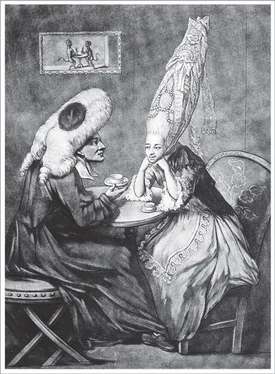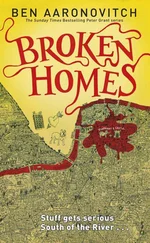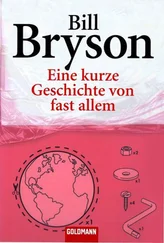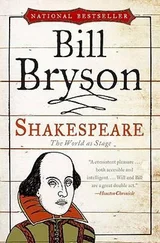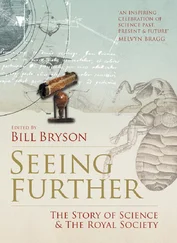Bill Bryson - At Home
Здесь есть возможность читать онлайн «Bill Bryson - At Home» весь текст электронной книги совершенно бесплатно (целиком полную версию без сокращений). В некоторых случаях можно слушать аудио, скачать через торрент в формате fb2 и присутствует краткое содержание. Жанр: Старинная литература, на английском языке. Описание произведения, (предисловие) а так же отзывы посетителей доступны на портале библиотеки ЛибКат.
- Название:At Home
- Автор:
- Жанр:
- Год:неизвестен
- ISBN:нет данных
- Рейтинг книги:4 / 5. Голосов: 1
-
Избранное:Добавить в избранное
- Отзывы:
-
Ваша оценка:
- 80
- 1
- 2
- 3
- 4
- 5
At Home: краткое содержание, описание и аннотация
Предлагаем к чтению аннотацию, описание, краткое содержание или предисловие (зависит от того, что написал сам автор книги «At Home»). Если вы не нашли необходимую информацию о книге — напишите в комментариях, мы постараемся отыскать её.
At Home — читать онлайн бесплатно полную книгу (весь текст) целиком
Ниже представлен текст книги, разбитый по страницам. Система сохранения места последней прочитанной страницы, позволяет с удобством читать онлайн бесплатно книгу «At Home», без необходимости каждый раз заново искать на чём Вы остановились. Поставьте закладку, и сможете в любой момент перейти на страницу, на которой закончили чтение.
Интервал:
Закладка:
But where America was really ahead of the rest of the world was in the provision of private bathrooms. Here the main driver was not homeowners, but hotels. The very first hotel in the world to offer a bath for every bedroom was the Mount Vernon Hotel in the resort community of Cape May, New Jersey. This was in 1853 and was so far ahead of its time that over half a century passed before any other hotels offered such extravagance. Increasingly, however, bathrooms—albeit shared and down the corridor rather than private and in one’s room—became standard in hotels, first in the United States and then increasingly in Europe, and hoteliers who failed to heed this trend paid a hefty price.
Nowhere was that more memorably demonstrated than at the vast and otherwise glorious Midland Hotel at St. Pancras Station in London. Designed by the great George Gilbert Scott, who was also responsible for the Albert Memorial, the Midland was intended to be the most magnificent hotel in the world when it opened in 1873. It cost the equivalent of $450 million in today’s money and was a wonder in almost every way. Unfortunately—in fact, amazingly—Scott provided just four bathrooms to be shared among six hundred bedrooms. Almost from the day of its opening, the hotel was a failure.
In private homes the provision of bathrooms was more hit-or-miss. Until quite late in the nineteenth century, many houses had plumbing to their kitchen and perhaps to a downstairs toilet, but lacked a proper bathroom because there wasn’t enough pressure in the pipes to get water upstairs. In Europe, even when pressure allowed, the rich proved unexpectedly reluctant to bring bathrooms into their lives. “Bathrooms are for servants,” sniffed one English aristocrat. Or as the Duc de Doudeauville in France responded loftily when asked if he would be installing plumbing in his new house: “I am not building a hotel.” Americans, by contrast, were much more attached to the satisfactions of hot water and flushing toilets. When the newspaper baron William Randolph Hearst bought St. Donat’s, a Welsh castle, the first thing he did was install thirty-two bathrooms.
Bathrooms were not at first decorated any more than you would decorate a boiler room, so they tended to be starkly utilitarian. In existing houses, baths had to be fit in wherever they could. Usually they took the place of a bedroom, but sometimes were jimmied into alcoves or other odd corners. In the rectory at Whatfield in Suffolk, the bath was simply put behind a screen in the downstairs front hall. Baths, toilets, and basins tended to be of exceedingly variable sizes. A bath at Lanhydrock House in Cornwall was so big that a stepladder was needed to climb into it. Others, with showers built in, looked as if they were designed to wash a horse.
Technological problems slowed the take-up of bathrooms, too. Casting a one-piece bath that was neither too thick nor too heavy was a surprisingly challenging proposition. It was easier in some ways to build a cast-iron bridge than a cast-iron bath. There was also the problem of giving the bath a finish that wouldn’t chip, stain, graze into hairline cracks, or simply wear away. Hot water proved to be a formidably corrosive medium. Zinc, copper, and cast-iron baths looked splendid when new but wouldn’t keep a finish. It wasn’t until the invention of porcelain enamels, about 1910, that baths became durable and attractive. The process involved spraying a mix of powder onto cast iron and baking it repeatedly till it acquired a porcelain-like gleam. Porcelain enamel is in fact neither porcelain nor enamel, but a vitreous coating—in essence a type of glass. Enamel bath surfaces would be quite transparent if whiteners or other tints weren’t added to the glazing compound.
At last the world had baths that looked good and stayed looking good for a long time. But they were still extremely expensive. A bath alone could easily cost $200 in 1910—a price well beyond the range of most households. But as manufacturers improved the processes of mass manufacture, prices fell: by 1940, an American could buy an entire bath suite—sink, bath, and toilet—for $70, a price nearly everyone could afford.
Elsewhere, however, baths remained luxuries. In Europe a big part of the problem was a lack of space in which to put bathrooms. In 1954, just one French residence in ten had a shower or bath. In Britain the journalist Katharine Whitehorn recalled that as recently as the late 1950s she and her colleagues on the magazine Woman’s Own were not allowed to do features on bathrooms, as not enough British homes had them, and such articles would only promote envy.
As for our Old Rectory, it had no bathroom in 1851, which is of course no surprise. However, the architect, the endlessly fascinating Edward Tull, did include a water closet—quite a novelty in 1851. Even more novel was where he elected to place it: on the landing of the main staircase, behind a thin partition. Apart from putting the water closet in an odd and rather inconvenient place, the partition would have had the effect of closing off the stair window, leaving the staircase veiled in permanent darkness.
The absence of any outlet pipes on the drawings of the house exterior suggests that Tull may not entirely have thought all this through. The point is, in any case, academic as the water closet was never built.
* There is slightly more to this. James Chadwick, the father of Edwin and Henry, had earlier in his life been a teacher in Manchester, where he taught science to John Dalton, who is generally credited with the discovery of the atom. Then, as a radical journalist, James Chadwick had gone to Paris, where he had lived for a time with Thomas Paine. So although he was a man of no particular importance himself, he served as a direct link between Thomas Paine and the French Revolution, the discovery of the atom, the sewage of London, and the beginnings of professional baseball.
• CHAPTER XVII •
THE DRESSING ROOM
I
Toward the end of September 1991, two German hikers, Helmut and Erika Simon of Nuremberg, were making their way along a glacier high in the South Tyrolean Alps, at a place called the Tisenjoch Pass, on the border of Austria and Italy, when they happened upon a human body protruding from the ice at the glacier’s edge. The body was leathery and severely emaciated but intact.
The Simons made a two-mile detour to a manned hut at Similaun to report their discovery. Police were summoned, but when they arrived it quickly became apparent that this was a matter not for them but for prehistorians. With the body were personal effects—a copper ax, a flint knife, arrows, and a quiver—that connected the man to a much earlier, more primitive age.
Subsequent radiocarbon dating showed that the man had died over five thousand years ago. He was quickly nicknamed Ötzi, after the nearest major valley, the Ötztal; others called him the Iceman. Ötzi had not only a full range of tools but also all his clothing. Nothing so complete and ancient had ever been found before.
Contrary to common assumption, bodies that fall into glaciers almost never pop out at the terminal end in an impeccably preserved state. Glaciers grind and churn with slow but brutal force, and any bodies within them are generally crushed to molecules. Very occasionally they are stretched to outlandish lengths, like characters flattened by a steamroller in a cartoon. If no oxygen gets to the body, it may undergo a process called saponification, in which the flesh transmutes into a waxy, foul-smelling substance called adipocere. Such bodies look eerily as if they have been carved from soap and lose nearly all meaningful definition.
Ötzi’s body was preserved as well as it was through a combination of unusually favorable circumstances. First, he died in the open on a day that was dry but with the temperature falling swiftly: effectively, he was freeze-dried. Then he was covered by a series of dry, light snowfalls, and probably stayed in that perfectly frigid state for years before the glacier slowly claimed him. Even then he remained in an outlying eddy that saved him—and, no less important, his possessions—from being dispersed and crushed. Had Ötzi died a few steps closer to the glacier or a little lower down the slopes or in drizzle or sun, or in almost any other circumstances, he would not be with us now. However ordinary Ötzi may have been in life, in death he became the very rarest of corpses.
Читать дальшеИнтервал:
Закладка:
Похожие книги на «At Home»
Представляем Вашему вниманию похожие книги на «At Home» списком для выбора. Мы отобрали схожую по названию и смыслу литературу в надежде предоставить читателям больше вариантов отыскать новые, интересные, ещё непрочитанные произведения.
Обсуждение, отзывы о книге «At Home» и просто собственные мнения читателей. Оставьте ваши комментарии, напишите, что Вы думаете о произведении, его смысле или главных героях. Укажите что конкретно понравилось, а что нет, и почему Вы так считаете.
